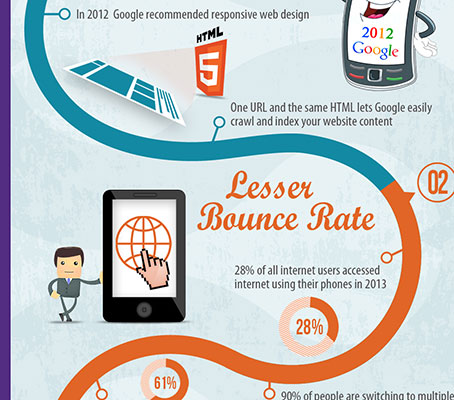When it comes to web site style, guaranteeing user-friendliness is vital. From receptive design to streamlined navigating, every element plays an essential role in producing a site that deals with your audience's needs. However what about the better details that can make or break an individual's browsing experience? Keep tuned as we uncover some often-overlooked suggestions that can raise your web site's functionality to the next level, making it really stand out in the digital landscape.
Significance of Responsive Design
Receptive style is a vital aspect of contemporary web site advancement. Ensuring your internet site is responsive ways that it can adapt to various screen sizes and tools, offering a seamless experience for users.
With the enhancing use smart devices and tablet computers to access the net, having a receptive design is essential for getting to a larger audience. It helps in enhancing user experience by making your website very easy to navigate and keep reading any gadget.
In addition, receptive style can positively impact your search engine positions, as internet search engine like Google prioritize mobile-friendly internet sites. By having a responsive style, you're likewise future-proofing your web site, as new tools with varying display sizes remain to emerge.
Simplify Navigating Structure
To boost individual experience and facilitate very easy accessibility to details on your web site, simplifying the navigating framework is critical. When developing your site, focus on producing a clear and instinctive navigation menu that helps site visitors locate what they're searching for promptly.
Limitation the number of menu items to the fundamentals, organizing associated pages together to stay clear of frustrating users. Use descriptive labels that plainly suggest the web content of each page, making it easier for users to comprehend where each web link will take them.
Think about applying dropdown menus for subcategories to prevent cluttering the primary navigating bar. In addition, consist of a search bar plainly on the page for individuals that choose searching for particular info.
Prioritize mobile responsiveness in your navigating layout to make sure easy gain access to on all gadgets.
Maximize Page Load Rate
Improving web page lots speed is vital for maintaining site visitors on your internet site. Slow-loading web pages frustrate users and can cause high bounce rates. To enhance web page tons speed, start by maximizing pictures. Compress photos without jeopardizing top quality to decrease their data dimensions.
In Learn Even more , enable web browser caching to keep regularly accessed resources in your area, speeding up load times for returning site visitors. Minify CSS, JavaScript, and HTML documents by eliminating unnecessary characters, comments, and formatting, improving lots rate.
Think about making use of a web content distribution network (CDN) to distribute your website's material throughout several servers worldwide, decreasing latency for individuals accessing your site from various places. Last but not least, limit using third-party scripts and plugins, as they can substantially impact load times.
Verdict
To conclude, by integrating responsive layout, simplifying navigation, and enhancing page tons rate, you can create an easy to use site that interest a wider audience and improves user experience. These essential elements make sure that site visitors can conveniently gain access to and navigate your website across various tools, causing increased involvement and fulfillment. By focusing on these essential elements, you can develop a successful site that keeps users returning for even more.
